Mum chose to deliver terminally-ill baby to say goodbye and save others
ABBEY Ahern chose to deliver her terminally-ill baby so she could say goodbye, and save others. They had 14 hours together.
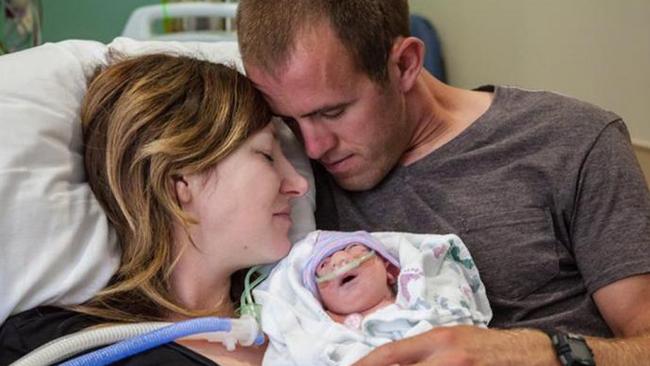
Babies
Don't miss out on the headlines from Babies. Followed categories will be added to My News.
LITTLE Annie only lived for 14 hours but she has created a lasting legacy for her own family, and those of complete strangers.
At 19 weeks’ pregnant with their third child, Abbey and Robert Ahern, of Oklahoma, tragically heard the news that their unborn child was “incompatible with life” at a routine ultrasound, reports Kidspot.
The baby had anencephaly, a serious birth defect in which a baby is born without parts of the brain and skull. There is no cure or treatment, and almost all babies with the defect die shortly after birth.
“It just sucked the air right out of my lungs. I knew what he was saying, but I couldn’t really apply it to us or to our baby,” Abbey writes in an article for GoodHouseKeeping.
While the couple were completely devastated, in that moment they quickly found a name for their third daughter; Annie, which means, ‘Grace’.
“I am fortunate enough to have an incredibly selfless and supportive husband and two healthy and vibrant daughters to hug when I couldn’t stop sobbing. I was also fortunate that doctors also told us Annie was unlikely to be in any pain.”
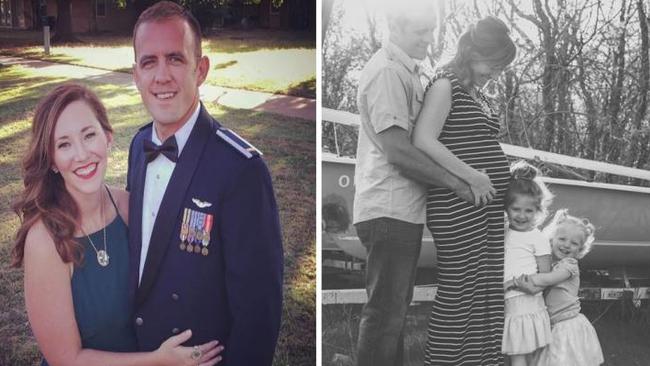
After the news of Annie’s diagnosis, Abbey and Robert went to their obstetrician to discuss options. Late-term abortion is the option most women in their position — around 95 per cent — choose, but the couple decided against it.
“We knew she had a purpose — even though she was not made for this world,” Abbey says. “We wanted a few precious memories with our girl. No one tried to change our minds.”
At the same obstetrician appointment Abbey asked about the opportunity to donate organs — which would be the first infant organ donation in Oklahoma.
A team of necessary specialists was soon put together to prepare for the small window of organ donation following a planned cesarean section. The lead doctor, Raja Nandyal, had a plan so that Annie wouldn’t just be in a bed on an incubator and the family could hold Annie in their arms.
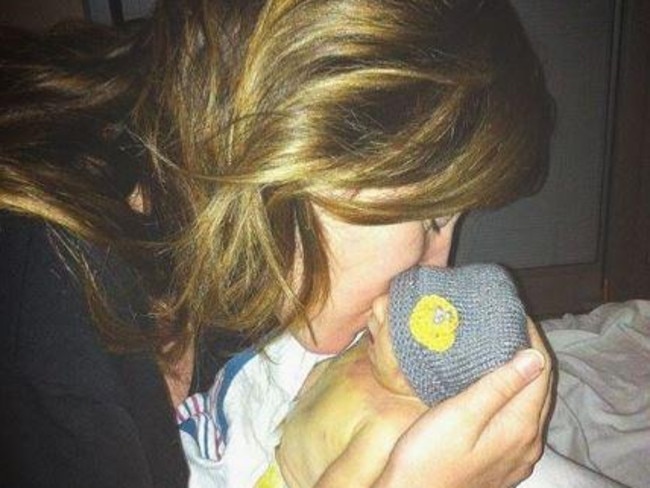
As the pregnancy continued, Abbey admits she “died a little inside” every time she was asked about her baby, or what gender she was having. Picking an outfit for Annie — the only one she would ever wear — caused her to break down in tears in store aisles.
It was their marriage counsellor who offered a “perfect little white dress” to wear which the couple put in a special box for Annie with a hat and booties.
At 5am on June 26, 2013, Abbey was booked for her cesarean section. Robert was able to stay with her during the entire procedure. Then suddenly, without fuss, Annie was born.
“She didn’t cry much, but I heard her making noise. They showed her to me, and she was so beautiful,” Abbey says.
“When she arrived, she was doing well, chubby and pink. Robert went with her, and I could tell he wanted to be in two places at once.”
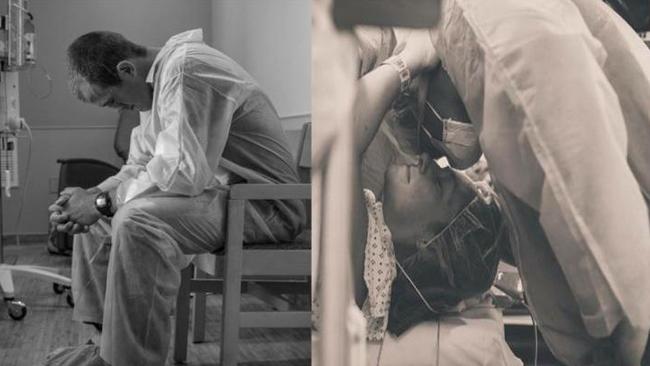
Abbey will never forget the precious moment her baby was in her arms.
“That moment, I felt lighter than I’d felt in five months. I remember holding her hands and pressing my face on hers and smelling her. I couldn’t kiss her enough,” she says.
Then it was time for Annie to meet more of her family, including her two big sisters, Dylan, 4, and Harper, 2. Abbey says no one was sad, there was happiness in the room.
“Dylan came into the room and climbed up next to me. I was worried that she might be concerned by Annie’s appearance, but she just had the most loving look on her face. She held Annie’s hand happily,” she says.
“When Harper finally came in, she was caring and gentle.”
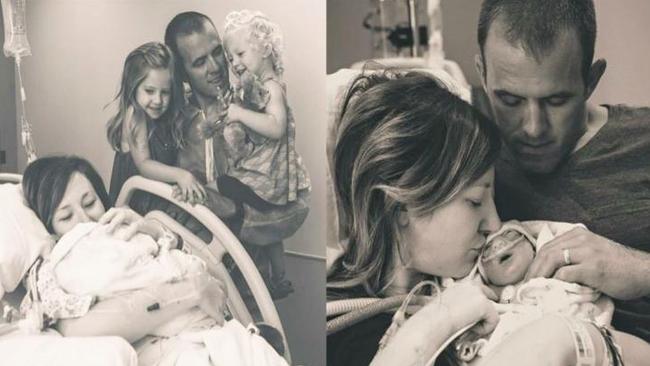
After the testing for organ donation had been done, they took Annie off oxygen to not delay her life and death process. It wasn’t until late in the evening around 11pm that Annie showed signs she was ready to go.
“I looked at her and knew it was time. Robert was so wonderful because she was both of ours, but he let me hold Annie. She gasped again, and we called the nurse. I was panicking and wanted the nurse to fix it,” Abbey says.
“The nurse looked at us with a beautifully calm expression and asked if we wanted her to get our family. It reminded me that we had prepared for this. Annie got to be with us all day, and she was ready.”
Abbey and Robert’s family surrounded them in those final moments. Abbey thanked her baby girl for being there, and reassured her that she loved her and it was OK to go.
“If she had to die, I’m so glad it was in my arms. She lived a beautiful and incredible 14 hours and 58 minutes. She spent her entire life surrounded by love, joy and peace. There was no sorrow, even when she passed away.”
Unfortunately because Annie’s oxygen levels were too low for too long, her organs weren’t viable for transplant which disappointed Abbey.
But they were able to donate Annie’s heart valves for recipients and many of her organs for research purposes. Annie’s donations also paved the way for other infants to donate organs.
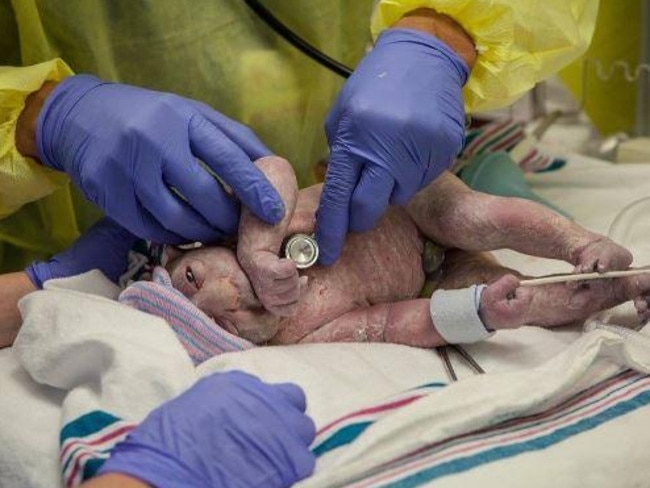
Abbey and Robert knew they wanted a big family, and their doctor told them they could try again for another child in six months. They got pregnant very quickly, and soon welcomed a fourth daughter Iva. But coping with the grief of losing Annie and being pregnant was hard for Abbey.
“From the very beginning, I think I’ve been deluded about grief. I thought once she died, I would actually grieve and be able to move on. And then maybe after her funeral, I thought it would end,” she says. “But you have to trudge through the mess to get to the other side.
“Annie’s story is one of hope. I think it shows people that in the midst of tragedy, there can be beauty. Annie was not ours to keep — her story was meant to be shared, and I intend to do so until the day I die.”
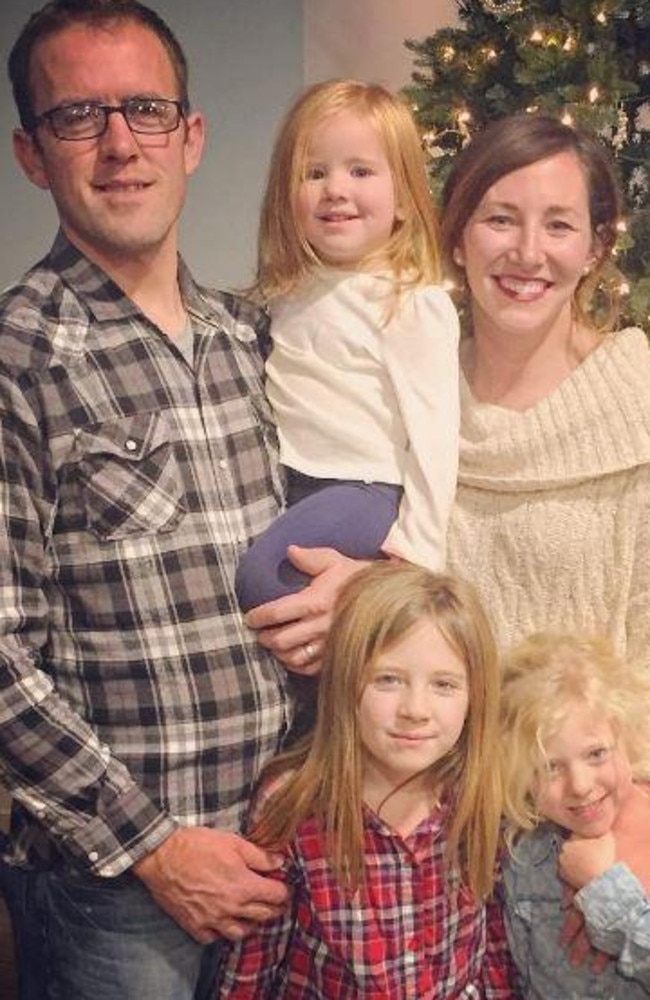
This article originally appeared on Kidspot.
Originally published as Mum chose to deliver terminally-ill baby to say goodbye and save others



